
Calopogon tuberosus - close up of the column showing the cap protecting the pollen grains on the end of the column |
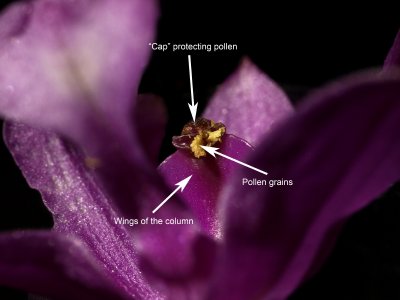
Looking down on the column. The protective cap has been lifted allowing the pollen to escape |
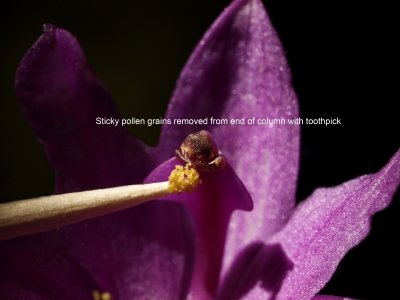
I used a toothpick to lift the cap and dislodge the pollen grains |
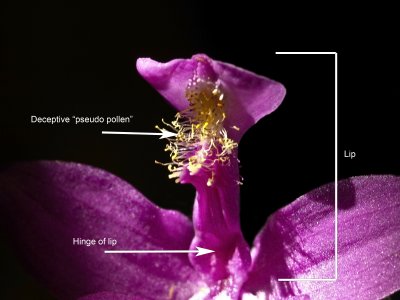
Close up of the lip, showing the deceptive "pseudo pollen" which fools the pollinator |
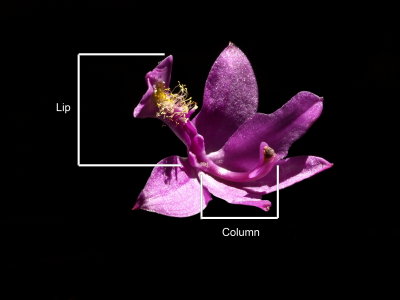
Calopogon tuberosus flower before being pollinated |
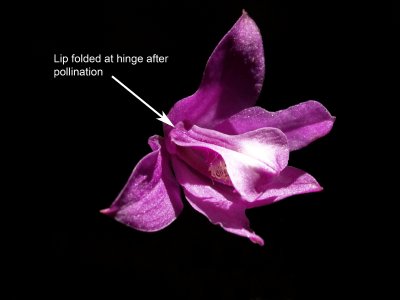
After visit from the pollinator, the lip has bent on its hinge, covering the stigma |
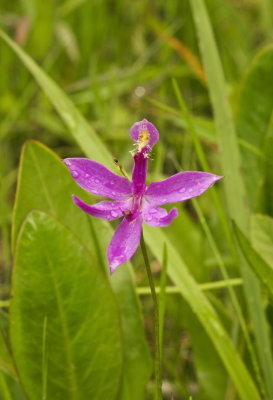
C. tuberosus with narrow sepals, petals, and lip |

C. tuberosus growing on a stump in the shallows of a pond |

Walter photographing me photographing him... |

This is me and Philip on the Blue Ridge escarpment bald |
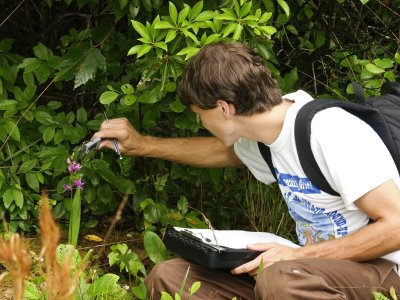
Philip making measurements on the flowers of one of our C. tuberosus plants |

Philip recording more measurements |

Micro island on the escarpment's cataract - D. rotundifolia, S. jonesii, and U. cornuta |
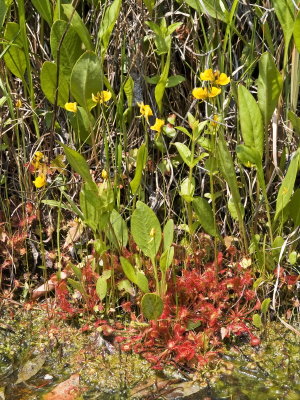
Closeup of D. rotundifolia and U. cornuta |
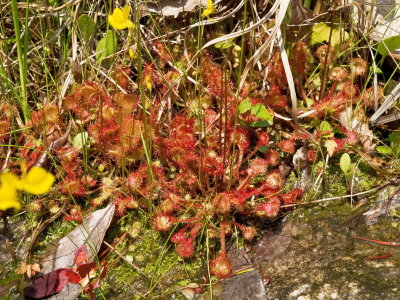
Closeup of D. rotundifolia with U. cornuta |
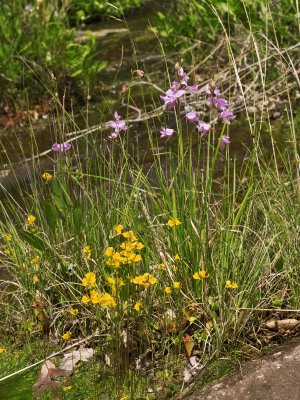
Micro island hosting C. tuberosus and very fragrant U. cornuta |
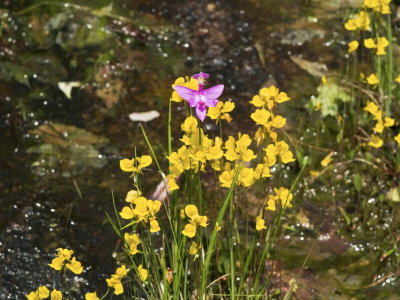
U. cornuta and a single C. tuberosus |
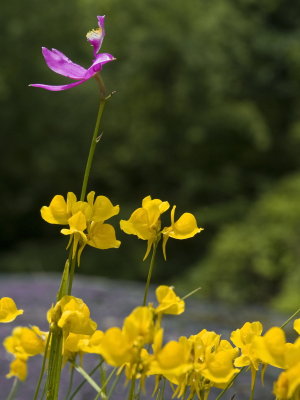
Closeup of U. cornuta and C. tuberosus flowers |

Lighter colored C. tuberosus on a micro island |
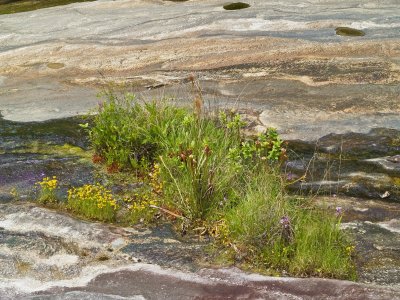
One of the escarpment's micro islands providing habitat for many interesting carnivorous plants and native orchids |
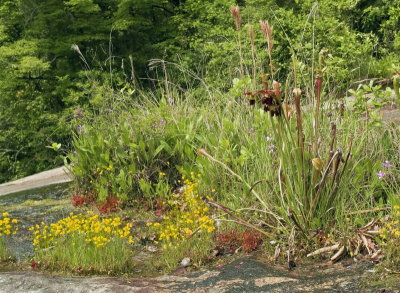
Same, from a different perspective |
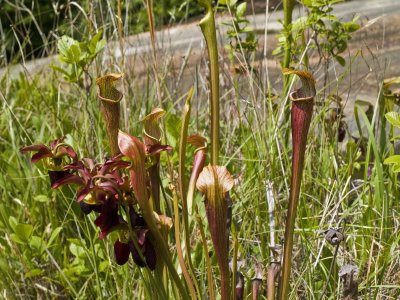
Sarracenia jonesii still in late bloom on the micro island - note prominent bulge near pitcher's lip |
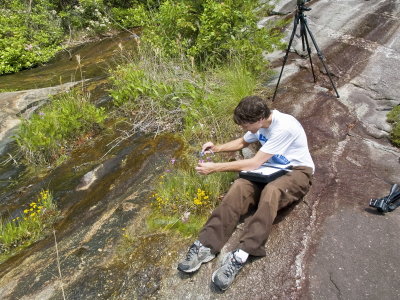
Philip making more measurements of the native orchids |
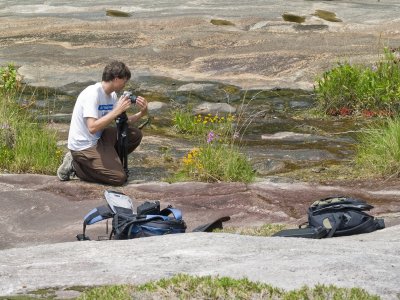
Philip getting a few shots of this very unusual habitat |











